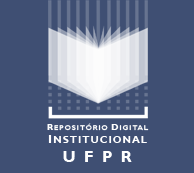QUANTIFYING ILLEGAL DEFORESTATION IN FRONT OF THE FOREST CODE: POTENTIALITY AND CHALLENGE
DOI:
https://doi.org/10.5380/rf.v51i2.61804Palavras-chave:
Permanent Preservation Areas, Legal Reserve Areas, Geoprocessing, Brazilian Forest Code, Environmental AdequacyResumo
Brazil confronts a challenge to implement the Forest Code, now called Native Vegetation Protection Law (LPVN), issued in 2012 under the number 12.651/12. The law introduced new mechanisms to quantified environmental liabilities in Permanent Protection Areas (APP) and Legal Reserve Areas (RL). Thus, this study presents a methodological proposal for calculation of environmental liabilities in areas of "water" permanent preservation and legal reserve using geoprocessing tools. This way, a complex analysis was required, based on the size of the private rural properties, the type of land use/cover, and “temporal cut”, for which there is no methodology defined. The “temporal cut” was defined to fine cancel those who practiced illegal deforestation prior to 22 July 2008, thus creating the figure of the "Consolidated Productive Areas”. This methodology was tested and applied in the municipality of São Félix do Xingu-PA and the results pointed to a total environmental liability of the municipality of 178,835 hectares by 2010. According to requirements established in article 61-A, the settlements were considered rural properties with consolidated productive areas, and thus benefited by law. Despite this, it is important to improve environmental education techniques and the recovering of environmental liabilities of settlements, mainly for sustainable production purposes.
Downloads
Publicado
Como Citar
Edição
Seção
Licença
Direitos Autorais para artigos publicados nesta revista são do autor, com direitos de primeira publicação para a revista. Em virtude da aparecerem nesta revista de acesso público, os artigos são de uso gratuito, com atribuições próprias, em aplicações educacionais e não-comerciais.A revista, seguindo a recomendações do movimento Acesso Aberto, proporciona acesso publico a todo o seu conteudo, seguindo o principio de que tornar gratuito o acesso a pesquisas gera um maior intrcambio global de conhecimento.
Conteúdos do periódico licenciados sob uma Licença Creative Commons 4.0 Internacional (CC BY 4.0)




